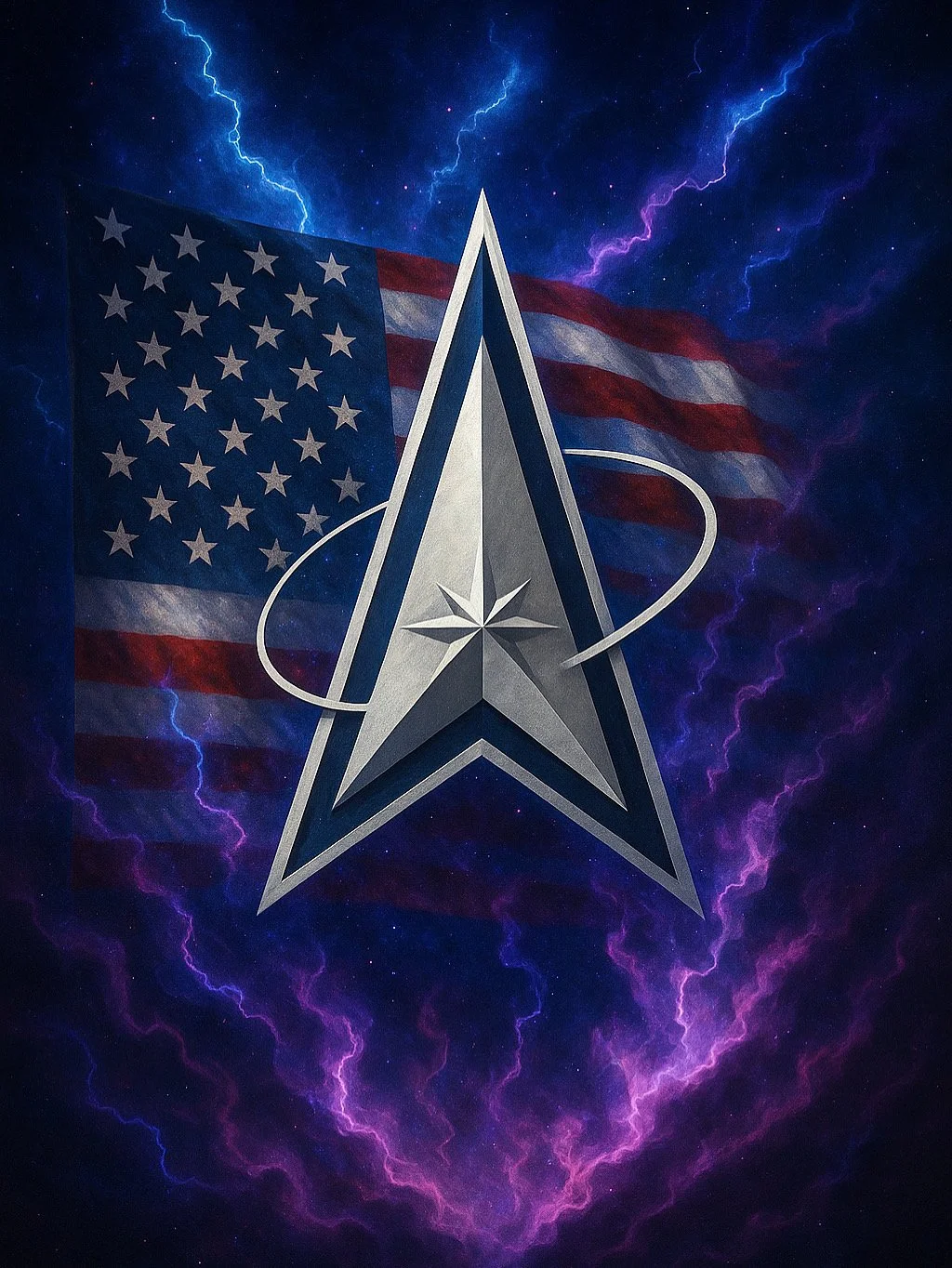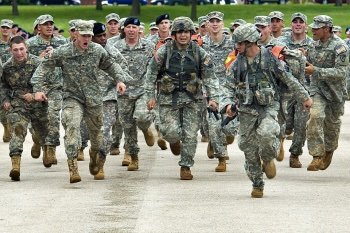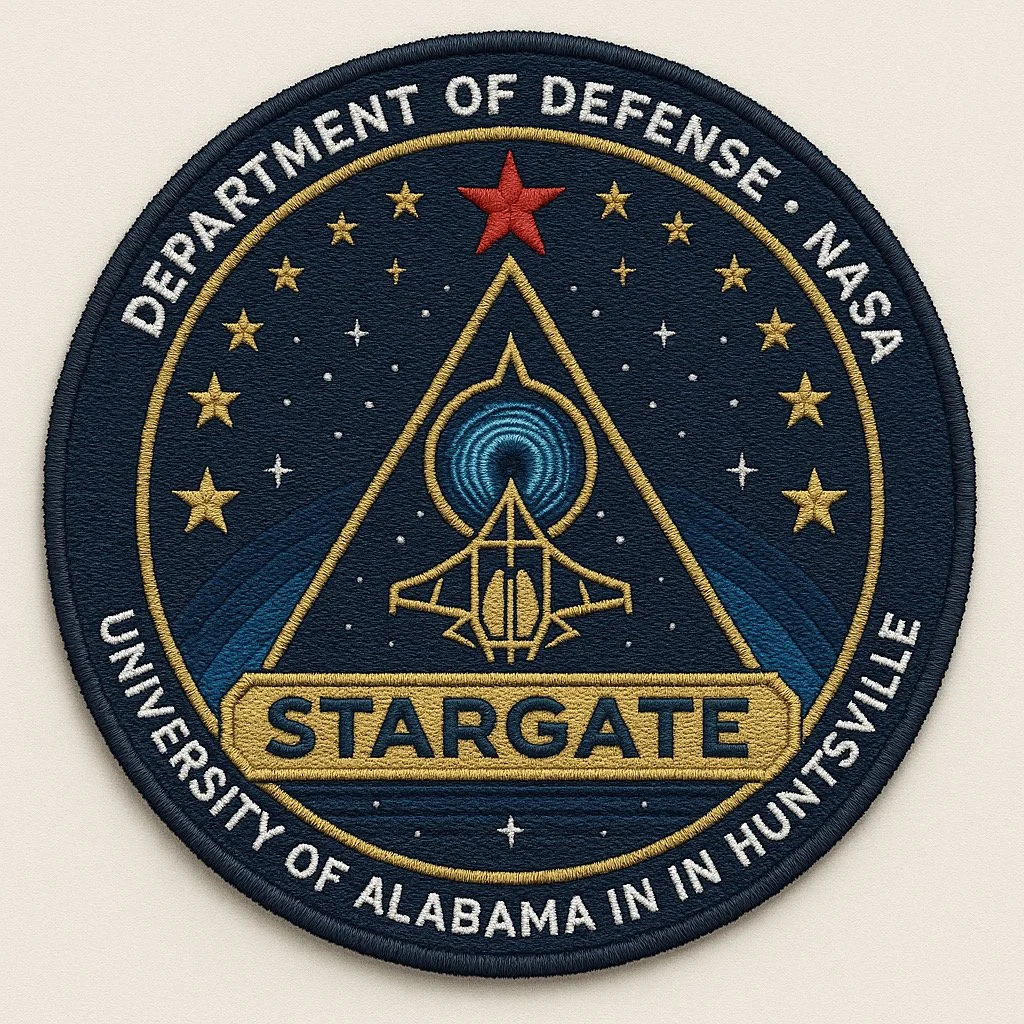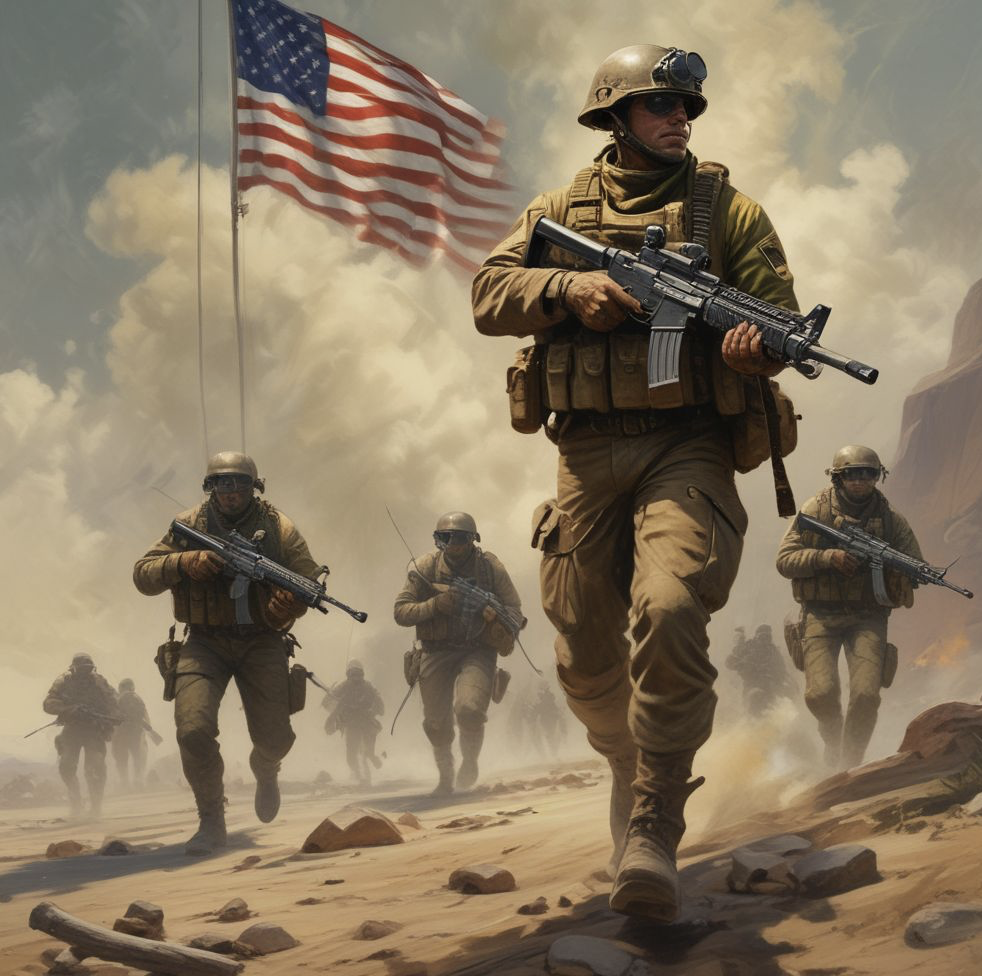
A.F.
Blankenship is a dedicated advocate for the Armed Forces, recognizing their critical role in national security, global stability, and technological advancement. The history of military forces dates back to ancient civilizations, where organized armies were essential for defense, territorial expansion, and maintaining order. Over time, military structures evolved, adapting to advancements in strategy, weaponry, and geopolitical landscapes.In the United States, the Armed Forces have played a pivotal role since the nation's founding, ensuring sovereignty and contributing to global peacekeeping efforts. The military has continually evolved, incorporating new technologies and branches to address emerging threats. One of the most recent developments in this evolution is the establishment of the United States Space Force in 2019. As the first new military branch in over 70 years, the Space Force was created to protect national interests in space, ensuring the security of satellites, communication networks, and other critical infrastructure essential to both civilian life and military operations.A strong military is vital for a nation's defense, deterrence of threats, and advancement of strategic interests. It not only safeguards national security but also drives innovation, as military research has historically led to breakthroughs in fields such as aerospace, medicine, and communications. The development of the Space Force marks a significant milestone in recognizing space as a new frontier for defense, emphasizing the need for preparedness in an era where space-based technologies play an increasingly crucial role in national and global security.Space has become a critical domain for both scientific progress and national security. As NASA pushes the boundaries of human knowledge, the protection of its assets, satellites, research stations, and deep-space communications—becomes more important than ever. The partnership between NASA and the U.S. Armed Forces ensures that space remains a safe and accessible frontier for exploration, scientific discovery, and the future of humanity beyond Earth.
By Lanette Parker - Blankenship M.F.A., Oil Painting, 30” x 40, 2010
Introducing the College & University Teams
In the United States, serving your nation goes beyond enlisting in the military—you can also volunteer your time and talents while pursuing higher education. Many colleges and universities across the country are affiliated with NASA, the Department of Defense, and military programs such as ROTC (Reserve Officers’ Training Corps) and leadership development initiatives.
These programs offer U.S. citizens a unique opportunity to receive a quality education while preparing for leadership roles in the armed forces or federal agencies. ROTC, for example, allows students to train as officers in the military while earning their degree, combining academic study with practical leadership skills and military training. Similarly, partnerships with NASA and the Department of Defense provide access to cutting-edge research, internships, and career pathways in science, technology, engineering, and defense sectors.
These schools are located nationwide, making this opportunity accessible to citizens from all regions. By enrolling in such programs, students not only advance their careers but also contribute to the nation’s security and technological progress. This path embodies the American Dream—where dedication, education, and service open doors to personal growth and the chance to make a lasting impact on the country’s future.
University of Alabama in Huntsville
You’re either in or all the way “in in” at UAH. Either way, welcome to the most elite campus in America.
Meet the Armed Forces
The American Team
Artwork by Lanette Parker - Blankenship M.F.A.
New Media: Digital Artwork & A.I., 2025
The United States Armed Forces are composed of several distinct branches, each with its own mission but united as one American Team dedicated to protecting the nation and its values. To be part of these teams means committing to serve something greater than yourself—your country, your community, and the freedoms we all share as U.S. citizens.The five main branches are:Army: The largest and oldest branch, responsible for land-based military operations. Soldiers defend the nation’s interests both at home and abroad, often on the front lines of combat and humanitarian missions.Navy: Guardians of the seas, the Navy controls and protects America’s maritime interests, ensuring freedom of navigation and projecting power across the world’s oceans.Air Force: Charged with air and space superiority, the Air Force operates advanced aircraft and supports space defense missions to secure the skies and beyond.Marine Corps: An elite rapid-response force specializing in amphibious warfare, the Marines are known as America’s expeditionary force in readiness.Coast Guard: Protecting the nation’s coastlines, ports, and waterways, the Coast Guard plays a vital role in homeland security, search and rescue, and maritime law enforcement.Space Force: The newest branch, dedicated to securing U.S. interests in space by protecting satellites, communication networks, and space-based defense systems essential to national security.
In addition, the National Guard serves both state and federal governments, providing essential support during emergencies, natural disasters, and military operations. Members of the National Guard balance civilian life with their duty to protect their communities and the nation.To serve in any branch means accepting the solemn responsibility of being a stakeholder in the defense of the United States. Freedom isn’t free; every day, service members stand guard against foreign and domestic adversaries who seek to undermine our nation’s security and values. This includes defending our space—the newest and most critical domain for national defense, where protecting satellites, communications, and space assets is vital to modern warfare and everyday life.Education and testing are fundamental parts of military service. Each branch requires recruits and officers to pass rigorous entrance exams and ongoing evaluations, such as the ASVAB (Armed Services Vocational Aptitude Battery), which assesses skills and aptitude to assign the best fit roles. Officer candidates undergo further testing and training to prepare for leadership. These educational standards ensure that service members are ready, capable, and adaptable to the demands of military life and evolving global challenges.Together, the branches form a unified American Team—a collective force of diverse skills, cultures, and missions working toward one goal: to protect the Constitutional Republic and the freedoms we cherish. Being a U.S. citizen comes with the privilege and duty to support and defend this nation, whether in uniform or as a civilian. Service is both an honor and a responsibility, a daily commitment to stand watch so that freedom endures for generations to come.Meet the
Civilian Team
Air Force Civilian Careers (AFCS), offers civilian job opportunities that support the United States Air Force without requiring military service. The site provides job listings across various fields, including engineering, cybersecurity, healthcare, and finance, along with details on the hiring process, benefits, and career development programs. It also features internships and student opportunities for those looking to enter federal service. AFCS careers offer competitive salaries, retirement plans, and work-life balance benefits while contributing to the Air Force’s mission.Artwork by Lanette Parker - Blankenship M.F.A., New Media: Digital Artwork & A.I., 2025
Tribute to Courage and Resilience
On June 26, 2019, Medal of Honor recipient Staff Sgt. David G. Bellavia was inducted into the Pentagon's Hall of Heroes for his extraordinary gallantry during Operation Phantom Fury in Fallujah, Iraq, in November 2004. His bravery in combat earned him the nation’s highest military honor, recognizing his actions that saved the lives of his fellow soldiers.
In his remarks, Admiral William H. McRaven, the ninth commander of U.S. Special Operations Command, and a distinguished alumnus of the University of Texas, spoke passionately about the qualities of true heroes. "We measure a person by the size of their heart," he said, reflecting on the unwavering courage and selflessness exhibited by those like Bellavia. Admiral McRaven also shared his famous words, which have become a guiding principle for many in the military: "If you want to change the world, don't ever ring that bell." This powerful quote emphasizes resilience and determination but also the spirit of every service member who serves with honor and bravery.
United States
Air Force
General CQ Brown, Jr., Chairman of the Joint Chiefs of Staff, is reshaping what leadership in the U.S. military looks like. He challenges us to embrace inclusion, accountability, and innovation, reminding us that our greatest strength is our people. His candid reflections on race and service broke barriers, inspiring honest conversations across the ranks. By leading with empathy and vision, he shows that true command is not just about power, but about representing and uplifting every voice in the force.
General Brown also embodies patriotism in a way that goes beyond symbols or slogans — for him, it is about service, sacrifice, and duty to every American. His career reflects a deep belief that defending the United States means protecting not only its borders but also its values: freedom, equality, and opportunity. He often speaks of the responsibility of leadership: to ensure that the men and women who serve have the tools, training, and respect they deserve. His vision of patriotism is not blind nationalism, but a call to strengthen the nation by living up to its highest ideals. At his core, he views defending the country as both an honor and an obligation — not just to protect today’s citizens, but to secure the future for generations to come.United States Marine Corps
General James “Mad Dog” Mattis, former U.S. Secretary of Defense, is widely regarded as one of the most formidable and ruthless military leaders of his generation. Known for his fierce discipline, strategic brilliance, and unyielding commitment to mission success, Mattis forged a legacy defined by strength, honor, and uncompromising dedication to the defense of the United States.His leadership extended beyond battlefield victories; he shaped the ethos and mindset of the U.S. Marine Corps and the entire Armed Forces, emphasizing the importance of courage, intellectual rigor, and moral clarity. Those who follow in his footsteps do not simply inherit a role—they carry the fury and might of America’s Golden Legacy, a tradition rooted in resilience, sacrifice, and an unwavering defense of liberty.This legacy means that the Marines—and all who serve under this banner—are bound by an unbreakable oath to protect the nation at all costs. The U.S. Marines embody a spirit that refuses to yield, a force that will never stop defending America, PERIOD. Their commitment is eternal, driven by the understanding that freedom demands vigilance, strength, and readiness to confront any threat, anywhere, anytime.General Mattis’ impact is a lasting reminder that the future of America’s military depends on leaders and warriors who embody his relentless pursuit of excellence and fierce patriotism—guardians of a legacy that ensures the United States remains strong, free, and secure.United States Army Special Operations
On September 19, 2024, at the John F. Kennedy Special Warfare Center and School’s Regimental First Formation, Command Sergeant Major David R. Waldo, Senior Enlisted Advisor of 1st Special Forces Command, addressed graduates of the Special Forces Qualification Course as they donned the Green Beret. The U.S. Army Special Forces, known as the Green Berets, are an elite unit trained for unconventional warfare, counterterrorism, foreign internal defense, and special reconnaissance, operating worldwide with cultural expertise and precision. These Special Operations Forces are vital to the nation’s security because they can operate in complex, high-risk environments that conventional forces cannot, protecting the United States and its interests with agility, strategic impact, and specialized skill. Waldo emphasized the motto “Iron sharpens iron” as a call to constant growth — reminding Soldiers that excellence comes from challenging one another, mentoring, and holding fast to the values of service and sacrifice. For the Special Forces community, as with other elite formations that wear the beret, the phrase reflects their shared commitment to forge strength through unity, discipline, and continual improvement, ensuring the nation remains safe, capable, and ready.Commander Waldo addressed the Soldiers, explaining that as they don the Green Beret, they join an elite community that embodies excellence, courage, and unwavering commitment to the nation. He emphasized that the Green Beret marks their completion of the Special Forces Qualification Course and their readiness to operate in complex and high-risk environments, defending the United States and its values. Within the Special Forces community, he noted, those who continue to grow, lead, and mentor may earn what is honored as the Black Beret, a symbol of mastery, leadership, and responsibility to guide the next generation of Special Forces. He reminded them that wearing the beret is more than a distinction—it is a pledge to uphold the highest standards of skill, discipline, and service, ensuring that each Soldier sharpens the force through mentorship, unity, and relentless pursuit of excellence.











